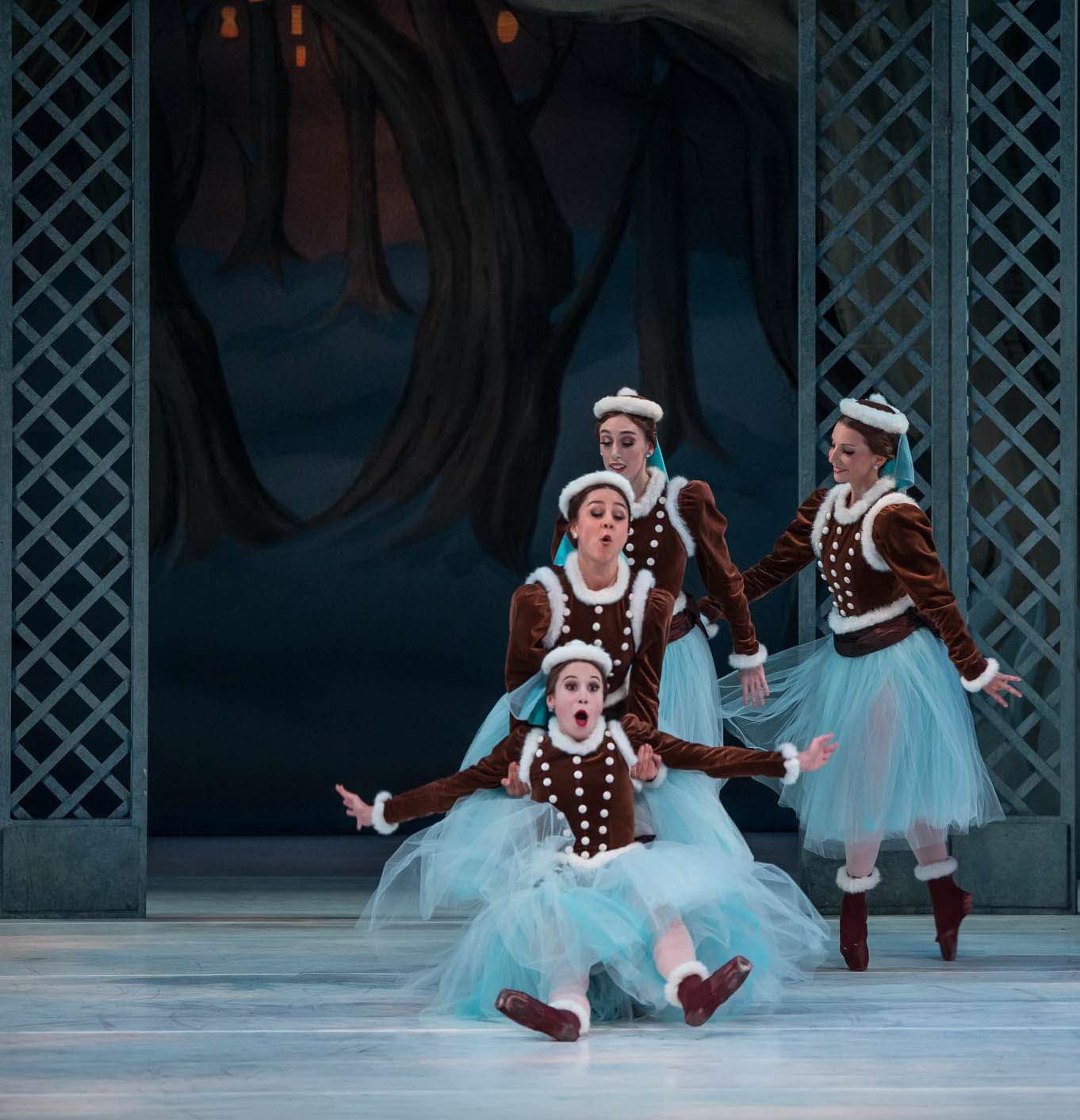|
Back
Early Days with Lopez Miami
Adrienne Arsht Center for the Performing Arts
10/19/2012 - & October 20, 21 (Miami), 26, 27, 28 October (Fort Lauderdale), November 30, December 1, 2 (Palm Beach), 2012
Frederick Ashton (Music by G. Meyerbeer & J. Lambert): Les Patineurs
George Balanchine (Music by I. Stravinsky): Apollo*
Paul Taylor (Music by A. Piazzolla): Piazzolla Caldera
Miami City Ballet principals, soloists, Renan Cerdeiro* (Apollo), Patricia Delgado* (Terpsichore), Tricia Albertson* (Polyhymnia), Jeanette Delgado* (Calliope), corps de ballet and apprentices
Opus One Orchestra, Gary Sheldon (Conductor)
William Chappell, Santo Loquasto
(Scenic Design), William Chappell, Karinska, Santo Loquasto (Costume Design), John Hall, Jennifer Tipton (Lighting Design)

(© Daniel Azoulay)
Miami City Ballet opened its twenty-seventh season with a new artistic director, former New York City Ballet star, Lourdes Lopez. There is a sense of security knowing that the baton has been passed to another Balanchine disciple. There has been considerable press about Lopez's arrival and introduction to the company and to the public. It looks as if she is the perfect fit and the stability of the company is now a certainty. Her welcome speech was quite moving in its recognition of the growth of this community.
Let's get on with what happened on stage. All works for this season were chosen by Miami City Ballet's founding artistic director, Edward Villella. Having made an early departure in September, it felt unusual not to have him there on opening night. The dancers' success is the result of the toughness Villella instilled in them. This is particularly necessary for a versatile opening program of works by three of the greatest choreographers of the last hundred years.
The curtain-raiser was Frederick Ashton's Les Patineurs which the company had not staged for nearly two decades. Ashton used ice skating as a metaphor for ballet dancing employing the familiar formula of divertissements of dancers in different colored costumes. Perhaps this is a ballet that is a little too precious for theatre snobs, but the audience seemed quite enchanted. It is the work of a different era. Yes, it does feel dated, but it probably was so even for its 1937 premiere. The lack of pretension makes it quite loveable. Skating parties seem to belong to a century even before the twentieth. But the athleticism and grace of the sport cannot be denied. The arrangement of ballet music from two operas by Meyerbeer is appropriate and instantly forgettable. To some this piece might seem to be a relic; it seems doubtful that Miami City Ballet will resurrect it again within the next twenty years, so be grateful it has been given. The cast couldn't have been more energetic and relished the comic moments. One pairing seemed a little bit under rehearsed but Renato Penteado as the Boy in Blue joyfully grabbed every gymnastic opportunity the choreography provided saving it all from becoming too cute.
George Balanchine's Apollo is one of the greatest art masterworks of the twentieth century. It could be the world's most performed ballet. Every production is going to be compared and at this point it is not easy to be distinguished. Yet Miami City Ballet's production was because of the unexpected performance of Renan Cerdeiro as the god. One might not have expected this role to be a good fit for such a lean, tall and boyish body. But the youngish Cerdeiro of the past has morphed into a mature and commanding presence. This Apollo takes the stage, no, more than that, he takes the theatre. And demonstrates love and guidance for the muses, especially the charming Terpsichore of Patricia Delgado, with a tenderness and honesty that are rare. The final moments when one of the most famous of all ballet poses is created, still has the power to make audience members gasp no matter how many times they have seen it. Apollo was the oldest work on this program yet it feels like the youngest. There is a sense of modernity that will always exist. And though we are next taken into Paul Taylor's world of sex with Piazzolla Caldera, Apollo feels more erotic.
Taylor's work is, however, quite a stunner. It is an ambience that cannot be captured merely with poses. The speed of the movement and the endless different uses of the body keep one endlessly startled, amused and maybe even aroused which was confirmed when I heard the women in front of me say, “Mucho caliente” (very hot). In this sexy world, sex is not a danger as it is so often in performing art. Here it is fun and comfortingly life affirming. When Nathalia Arja is in search of a partner, one can't help but feel for her. And when she finds love with Miami City Ballet's sexiest male dancer, Penteado, she doesn't seem conflicted about sharing him with Jeanette Delgado. This trio's pairing is the work's most emotionally moving though there are plenty of other partnerships that turn up the heat.
The Opus One Orchestra under the direction of Gary Sheldon outdid itself, especially with Apollo. Without the dancers these musicians would still have created quite an impact.
This program will be repeated in Fort Lauderdale's Broward Center for the Performing Arts October 26 through October 28 and at the Kravis Center in Palm Beach November 30 through December 2.
Jeff Haller
|